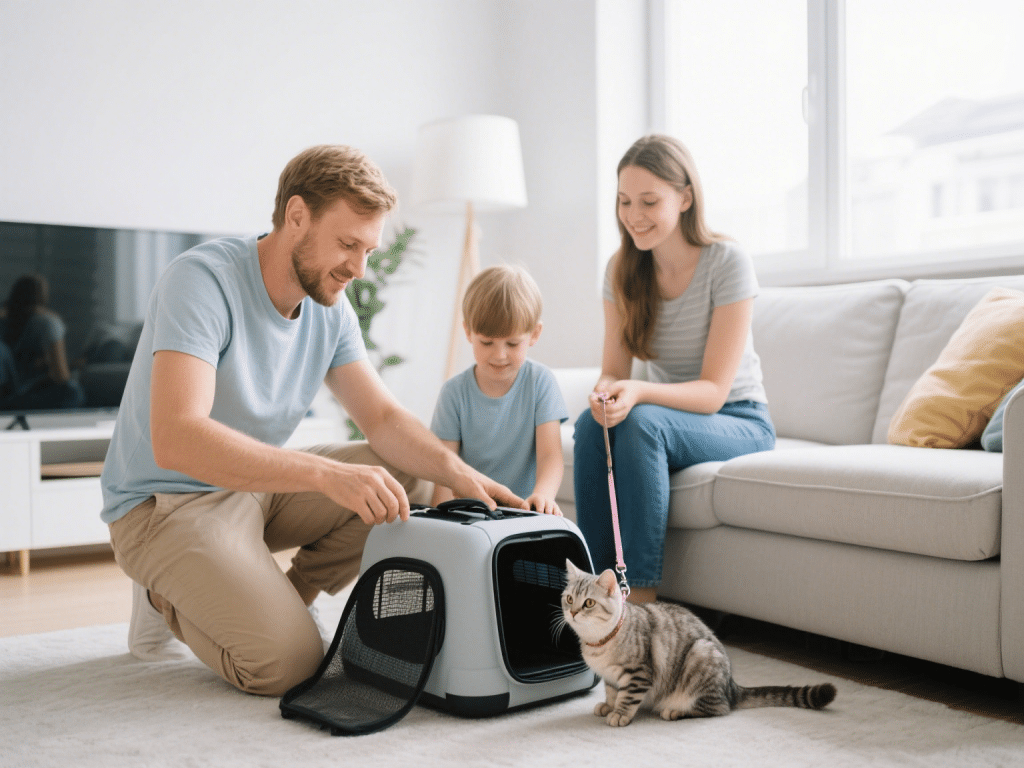
Introduction
Traveling with cats demands careful planning to minimize stress for both feline and owner. Unlike dogs, cats are territorial and may find new environments overwhelming. Whether embarking on a road trip, flying commercially, or relocating internationally, this guide outlines step-by-step strategies—from selecting the right carrier to pre-trip familiarization—to guarantee a stress-free experience.
1. Pre-Travel Preparation
1.1 Veterinary Check-Up and Documentation
1.2 Carrier Selection and Familiarization
Carrier Type:
Soft-Sided Carrier: Lightweight, flexible, easier to stow under airplane seats. Look for at least 19”×13”×10” with secure, zippered mesh windows for ventilation.
Hard-Sided Carrier: More protective; less prone to collapse during turbulence. Choose one with spring-door locking latches.
Familiarization Routine:
Place carrier in a quiet corner 3–4 weeks before departure.
Sprinkle catnip or treats inside to encourage voluntary entry.
Feed meals near, then inside, the carrier to build positive association.
1.3 Acclimating to Transportation Sounds
2. Day of Travel Essentials
2.1 Food, Water, and Feeding Schedule
Fasting Protocol:
Fast your cat for 4–6 hours before departure to minimize vomiting and motion sickness.
Provide a small amount of water up to departure time, then pack a portable water dispenser for pit stops or layovers.
Meal Timing:
2.2 Anxiety Management
Pheromone Sprays:
Comfort Items:
Include a familiar, unwashed blanket or shirt.
Insert a small, absorbent pad to handle occasional accidents.
Medication (Optional):
Gabapentin (5–10 mg/kg): Administer 1.5–2 hours prior to travel for mild sedation (consult your veterinarian).
Trazodone (3–5 mg/kg): For cats with severe anxiety, given 1–2 hours before departure.
Always trial medication at home 2–3 days before the trip to gauge tolerance.
2.3 Security and Identification
3. During Transit
3.1 Car Travel Strategies
Climate Control:
Frequent Breaks:
Every 2–3 hours, pause in a safe, quiet area. Offer fresh water via a spill-proof bowl and allow your cat to use a portable litter box if necessary. Keep the carrier partially covered to reduce overstimulation.
3.2 Air Travel Recommendations
Check Airline Policies:
Confirm your airline’s pet fee, approved carrier dimensions, and required paperwork at least 2 weeks before departure.
Book an aisle seat to facilitate mid-flight checks. Avoid rows near galleys or bathrooms to reduce loud noises.
Security Screening:
At TSA, present the health certificate. Cats must exit the carrier to pass through the metal detector; guide your cat securely with a harness and leash.
Place the empty carrier on the X-ray belt while you carry your cat through the checkpoint.
In-Cabin Etiquette:
4. Arrival and Acclimation
4.1 Immediate Post-Travel Care
4.2 Gradual Exploration and Bonding
Scent Introduction:
Swap bedding between previous and new environments to help your cat recognize overlapping scents.
Allow your cat to explore adjacent areas incrementally, under supervision.
Enriching Activities:
Conclusion
Traveling with cats doesn’t have to be stressful. By securing veterinary clearance, acclimating carriers in advance, timing meals appropriately, and implementing calming strategies, you can ensure a smooth journey. Whether by car or plane, a well-prepared environment and consistent routine will ease your cat into new surroundings. With patience and thoughtful planning, your feline friend can remain relaxed, healthy, and happy during every adventure.